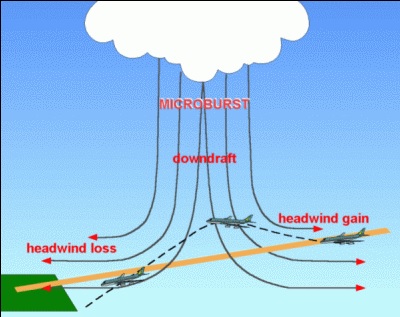

Image from WikiCommons.
Summer is a popular time for families to take their annual vacation and many do so by flying to their destination of choice. Of course, frequent flyers know that adverse weather from Mother Nature can put a damper on travel plans. But what type of weather actually causes the most delays and what time of year are you most likely to spend extra time at the airport? Let’s take a look at how weather influences air travel.
According to the Bureau of Transportation Statistics, an average of 65% of all flight delays from June 2003 to May 2014 were weather related and of the total delayed minutes, nearly 75% were due to the weather (since weather delays tend to be longer waits than other causes). Given these statistics, it’s clear that weather is a major factor in the timeliness not to mention safety of aircrafts. The most common weather elements to cause delays are snow/ice storms and thunderstorms. Interestingly, summertime flights actually incur more weather related delays than winter. This may sound counterintuitive since news sources advertise the amount of flight delays and cancellations during major winter storms but snow/ice storms typically have 2 – 5 days of lead time. Therefore, airlines and passengers have more time to reschedule and redirect flights as needed.

On the other hand, summertime thunderstorms tend to pop up and their exact location, time and intensity are quite variable making it much more difficult to change flights in advance. Thunderstorms are particularly dangerous to air travel as they can produce two potentially detrimental elements: high wind shear and icing. Wind shear occurs when the wind quickly changes speed and/or direction over a short change in altitude. In particular, the wind shear phenomena known as microbursts are produced by strong thunderstorms and can be devastating to aircrafts. Here, rain cooled air rapidly sinks out of a thunderstorm and fans out in all directions leading to severe wind shear and causes planes to quickly lose lift. See the diagram below for more detials.

An additional danger from thunderstorms is ice. The tops of cumulonimbus clouds stretch up to high levels in the atmosphere and can house supercooled liquid water droplets (water that exists as liquid at temperatures below freezing). The supercooled water droplets can freeze onto the exterior of the aircraft and prove detrimental to an aircraft’s ability to maintain lift. Of course ice is a hazard during the winter but can be less predictable during the summer months.
Interestingly, lightning does not rank as one of the most feared elements of thunderstorms. Just as passengers inside a car are generally safe from lightning, similar principles apply to aircrafts. The outer shells of airplanes are mainly made of aluminum, a very good electrical conductor, which allows the electrical current to travel around the exterior portion of the aircraft. In fact, aircrafts are designed in a way that most passengers won't notice a direct strike outside of the bright flash.
Therefore, it’s important to pay close attention to the weather when you have an upcoming flight as any advance notice of adverse weather will help you better prepare for and understand potential flight delays.